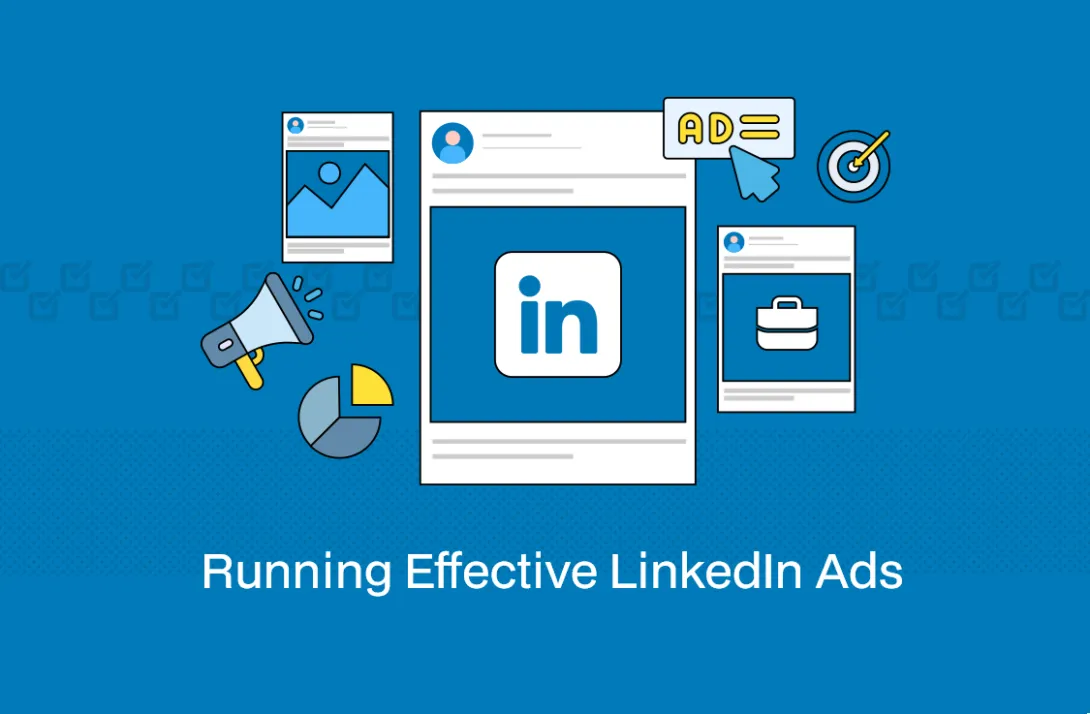


Technology




LinkedIn has evolved into a leading platform for professional networking and B2B marketing, offering unique advertising opportunities for businesses looking to reach decision-makers, professionals, and high-value audiences. While platforms like Facebook, Instagram, and Twitter may seem like obvious choices for social media advertising, LinkedIn’s professional focus makes it a top contender for B2B campaigns and specialized industries. Here’s an in-depth look at how to run effective LinkedIn Ads, when to choose LinkedIn over other platforms, and what to expect regarding ROI trends.
Running Effective LinkedIn Ads: Key Strategies
LinkedIn provides several advertising objectives, including brand awareness, website visits, engagement, lead generation, and job applications. Clearly defining the goal for your LinkedIn campaign will inform your ad format and targeting options. For example, if you aim to increase website visits, you might select single image ads with a strong call-to-action, whereas a lead generation campaign would benefit from LinkedIn’s native Lead Gen Forms.
LinkedIn Ads offer unparalleled targeting options for reaching professionals based on job title, industry, company size, seniority, skills, and more. To maximize ROI, leverage LinkedIn’s targeting filters to narrow in on the audience most likely to respond to your offering. Account-based targeting, where you can directly target specific companies, is ideal for campaigns targeting high-value accounts or enterprise-level clients.
To increase engagement, create multiple ad sets targeting specific personas or industries. By crafting content tailored to each segment, you can improve ad relevance and maximize results.
LinkedIn Ads provide a range of ad formats, each suited to different campaign goals. Common formats include:
By experimenting with different formats, you can identify the ad types that resonate best with your audience.
LinkedIn Ads benefit from professional and direct messaging. Avoid overly promotional language and focus on value-driven copy that speaks to industry pain points and solutions. Compelling visuals, concise text, and strong CTAs are essential to capturing attention.
Since LinkedIn is a professional network, crafting ad copy that reflects expertise and authority can resonate with users who are looking for reliable and insightful content. Highlight industry certifications, case studies, or testimonials that demonstrate your company’s impact in the field.
LinkedIn’s Insight Tag is a powerful tool for tracking conversions, visitor demographics, and website activity resulting from your LinkedIn Ads. By adding the Insight Tag to your website, you can measure the effectiveness of your campaigns, optimize for better results, and retarget visitors who didn’t initially convert.
Like any advertising strategy, LinkedIn Ads require regular testing and optimization. Use A/B testing to determine which headlines, images, and calls-to-action drive the best results. Analyzing LinkedIn’s campaign metrics (e.g., click-through rates, cost-per-click, conversion rate) will help you refine your strategy and maximize ROI over time.
When to Choose LinkedIn Ads Over Other Social Media Platforms
LinkedIn’s highly professional environment makes it ideal for certain types of campaigns, especially for B2B marketers, enterprise businesses, and industries with complex sales cycles. Here’s when LinkedIn Ads may be a better choice than other social platforms:
In contrast, platforms like Facebook and Instagram are better suited for reaching broad consumer audiences, promoting B2C products, and engaging customers on a more personal or lifestyle-oriented level.
ROI Trends in Running LinkedIn Ads
The ROI of LinkedIn Ads is typically higher for companies focusing on B2B sales and high-value customers. Here are some key trends and insights on LinkedIn’s ROI:
LinkedIn Ads generally have a higher cost-per-click (CPC) compared to platforms like Facebook. However, the quality of leads generated on LinkedIn tends to be higher, as the audience is more targeted and professionally aligned. For B2B marketers, LinkedIn’s higher CPC is often justified by a higher lifetime value (LTV) of leads, resulting in a strong overall ROI.
LinkedIn’s Lead Gen Forms have proven to deliver strong conversion rates. By allowing users to submit information directly within LinkedIn, Lead Gen Forms simplify the user experience and reduce friction, making it easier for users to engage without leaving the platform. For many marketers, the investment in LinkedIn Lead Gen Ads is justified by the quality and volume of leads generated.
LinkedIn has shown strong results in terms of engagement for top-of-funnel and brand awareness campaigns, which are critical for B2B brands looking to build trust and recognition. Sponsored Content and Video Ads, in particular, are effective for nurturing audiences, allowing brands to maintain visibility and reinforce messaging over time.
LinkedIn’s retargeting capabilities are a valuable tool for improving ROI. By using the LinkedIn Insight Tag, marketers can retarget users who visited their website but didn’t convert, allowing them to create follow-up campaigns that drive potential leads further down the funnel. Retargeting with tailored content has proven to enhance conversions and lower acquisition costs.
Conclusion
LinkedIn Ads present a unique opportunity for businesses targeting professional audiences, particularly those in B2B industries. With precise targeting, a variety of ad formats, and advanced conversion tracking, LinkedIn enables marketers to reach the right people with relevant messages. When combined with careful campaign management and optimization, LinkedIn Ads can drive impressive ROI.
At Digital Strategy Co., we leverage LinkedIn’s powerful advertising tools to help our clients engage, nurture, and convert their ideal audiences. Whether it’s lead generation, brand awareness, or high-impact retargeting, LinkedIn Ads offer a professional edge in today’s competitive landscape. By selecting LinkedIn for campaigns that require targeting precision, high-quality leads, and strong professional positioning, marketers can drive meaningful results that align with their business objectives.